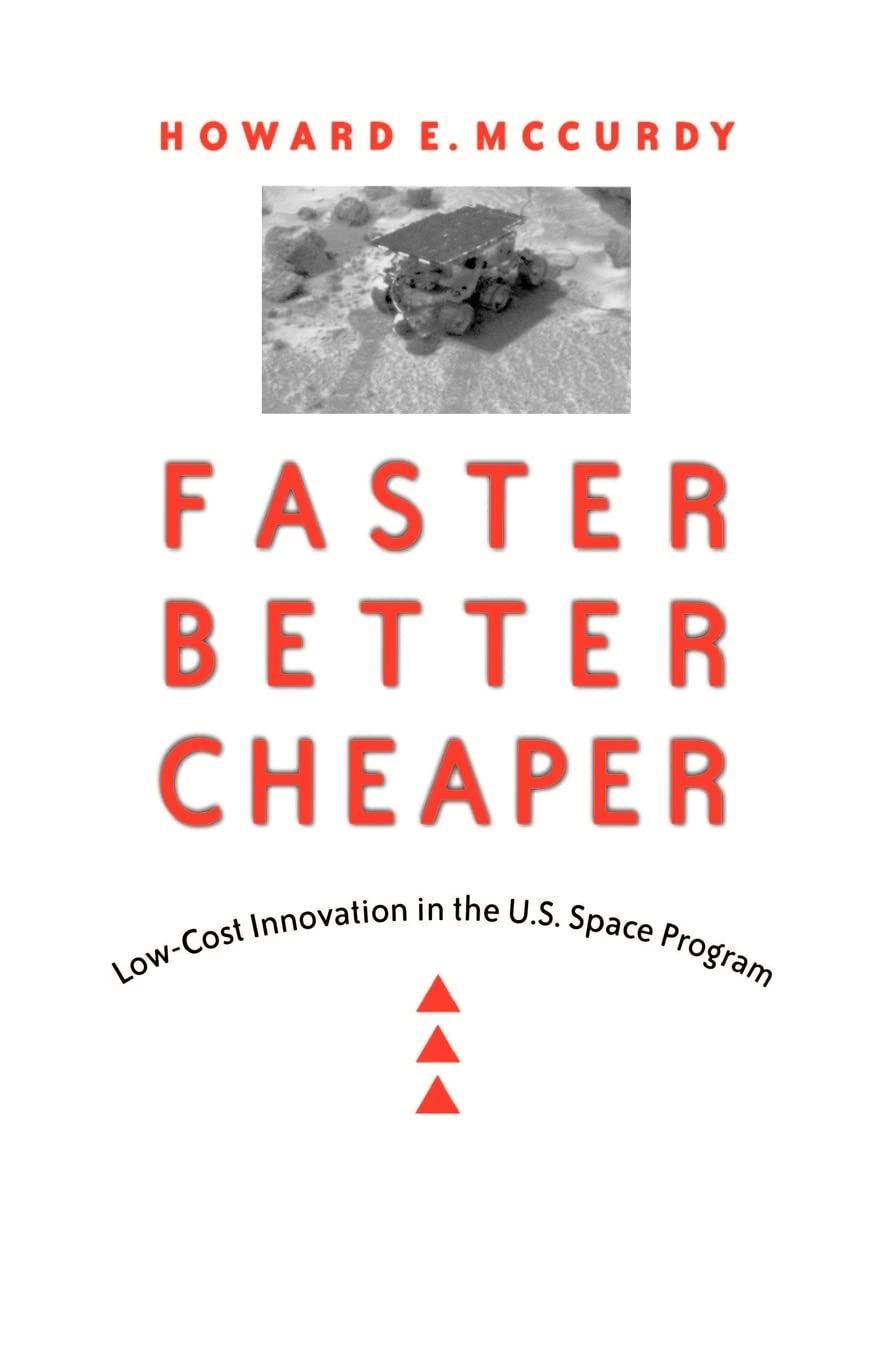Customer Services
Copyright © 2025 Desertcart Holdings Limited
Desert Online General Trading LLC
Dubai, United Arab Emirates


Full description not available
R**S
Managing Space Exploration--It's Not as Easy as it Looks
During the early 1990s NASA undertook a set of low-cost space science mission that became known as the "faster, better, cheaper" program. It was not really a program, of course, but more of a mantra, and Howard E. McCurdy's important study of the trend in the 1990s helps to explain what it was and what it was not. It emerged in the aftermath of the loss of the multi-billion dollar Mars Observer spacecraft in 1993, when NASA Administrator Daniel S. Goldin announced that he could no longer abide the building of "Battlestar Galactica" type space probes. NASA had to find a way to accomplish low-cost missions to the planets. McCurdy notes that one of the fundamental tenets of the program management concept was that three critical factors--cost, schedule, and reliability--were interrelated and had to be managed as a group. He also notes that managing for all three proved exceptionally difficult; if program managers held cost to a specific level, then one of the other two factors, or both of them to a somewhat lesser degree, would be adversely affected. The "faster, better, cheaper" concept tried to squeeze each of these issues--although many said you could successfully "pick two" to control rather than all three--but remarkably NASA project managers did so with some success.McCurdy first identifies the missions that fell into the "faster, better, cheaper" model. These included: NEAR (Near Earth Asteroid Rendezvous), Mars Pathfinder, Lunar Prospector, Stardust, Deep Space 1 and 2, Mars Global Surveyor, Mars Climate Orbiter, Mars Polar Lander, SAMPLEX, Fast Auroral Snapshot Explorer (FAST), Submillimeter Wave Astronomy Satellite (SWAS), Transition Region and Coronal Explorer (TRACE), Wide-Field Infrared Explorer (WIRE), and the Lewis and Clark probes. Out of these 16 missions, five failed to achieve their objectives. Two of the failures were spectacular--Mars Polar Lander and Mars Climate Orbiter in 1999--some were equally spectacular such as Mars Pathfinder in 1997 and Lunar Prospector in 1998. Others, such as Mars Global Surveyor, continue to deliver path-breaking scientific data.After describing the missions and their outcomes, McCurdy then tallies the parameters that led to the success of these missions. These lessons learned included:1. Use cohesive technical teams with authority to do the job.2. Maintain visibility through reviews3. Use a design-to-cost philosophy4. Apply risk management techniques5. Use experienced personnel6. Establish good communication7. Conduct better up-front planning8. Have clear requirement definition9. Use technology with an appropriate readiness levelThis is a valuable study written for the project manager seeking to complete a successful high technology effort on schedule and on budget. It is an easy read and worthwhile for anyone seeking knowledge on how NASA has been able to accomplish its complex tasks. McCurdy undertook this study for the NASA History Division while I was Chief Historian, and the result helped to reshape the project management approach at the agency. I highly recommend "Faster, Better, Cheaper."
K**R
Great Analysis of NASA's successes and failures in the 90s
This book examines in great detail why FBC was needed and what its impact was. McCurdy looks not only at the successes like Mars Pathfinder but also examines FBC's failures. His analysis helps highlight the pros and cons of FBC, an understanding that will help the reader understand NASA's space exploration program.One of the most interesting parts in this book is the comparison of Pathfinder and Viking and the breakdown in costs associated with the two. It also explores the kinds of decisions that went into MPF to dispel the myth that Viking created in that space exploration required multi-billion dollar missions.
J**.
The Goldin Days...
Pathfinder to Mars was the highlight of Faster, Better, Cheaper and Howard McCurdy's book provides an overview of the management there through effective comparisons. The book is instructive as to the management of high-tech space projects during NASA's Dan Goldin years. Nonetheless, it appears that management can achieve only two elements of the triade of FBC at any given time effectively. Pathfinder was a remarkable exception to the general rule.
Trustpilot
2 months ago
5 days ago
5 days ago
2 months ago